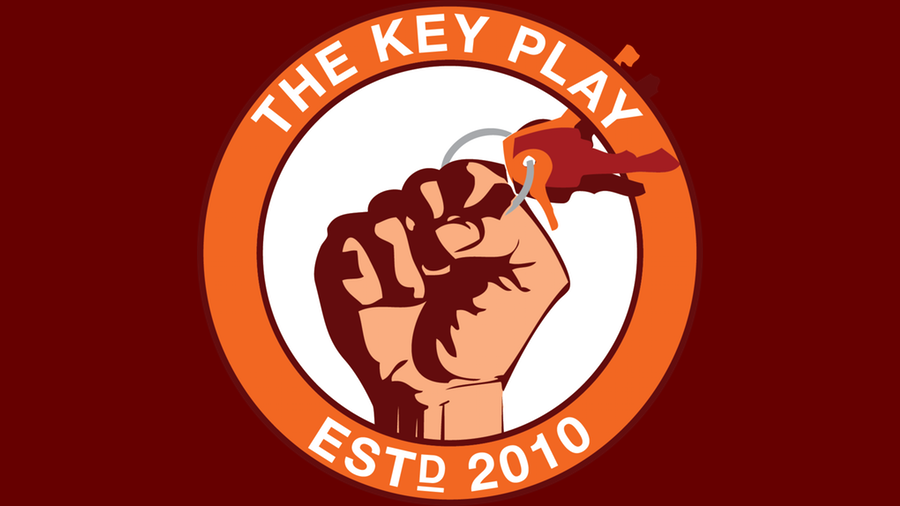Eric's Notes
Based on talent, I think VT is the better team, as does Vegas.
However the difference isn't that great and there are hidden X's and O's that look to favor the Ramblin' Wreck a bit. Virginia Tech likes to use a double tight end set vs Al Groh's 3-4 defense. Those two tight ends help form a seven man offensive line, that spreads Groh's 3-4 wide. That's a hat on a hat with Groh's deep safeties too far off the line to help in the run game. This year the Hokies are lacking a second tight end, will this allow GT to have a man run free?
Defensively, we know Bud has spent A LOT of time trying to figure out how to slow down the Flexbone (it's not a spread) option. Unfortunately Bud's best unit this season is a 3-3-5 that features 2 iffy linebackers. He has stated in not so many words to expect to see multiple looks and fronts, but I am pretty sure it's going to take four good, full time defensive lineman and three gap controlling linebackers no mater which way he designs it. Simultaneous play like that would be a first for the season.
I do expect Bud to disrespect the pass playing a safety over the top and manning up the wide outs.
GT's offensive line has underwhelmed this season, much like VT's defensive line.
Joe's Notes
Up front the Hokies are going to have to have their best mental game of the year. Attacking the 3-4 is difficult because it's unfamiliar territory for an offensive line that's used to seeing four down defensive linemen and three linebackers. That extra linebacker provides a high level of diversity ranging from the defensive fronts (how the players line up) to who rushes the passer on blitzes. Long story short, the pressure can come every which way while keeping sound defensive integrity. The question you may ask yourself is, “If the 3-4 is so great, then why doesn't everyone use it?" The answer is because it takes athletic defenders that can play multiple positions to run it. In particular you need a space eating nose guard and linebackers that can play upright or down on the line. Because Georgia Tech is transitioning from a 4-3, all the pieces aren't there yet. Nose guard was a liability at the beginning of the season, but the undersized Logan Walls (6' 2" 295 lbs) is slowly developing into the role. We're fortunate that backup nose guard T.J. Barnes (6' 7" 333 lbs) hasn't been able to read and react at game speed.
Keep an eye on Bruce Taylor's lateral movement, he's suffering from a high ankle sprain.
What makes Georgia Tech's spread option difficult to stop isn't an overwhelming number of plays to defend, but rather many variations of the blocking schemes used with each play. To over simplify things, an option play isolates a defender and leaves it up to the quarterback to make a decision whether to keep or pitch the ball based on the defenders reaction. The combination of what defender is isolated and how it's blocked up front makes it very confusing to defenders trying to read the play.
Georgia Tech has the number one ranked rushing offense in the country averaging 317.38 yards per game. In principle stopping GT's run game is simple, defenders must honor their assignments and do every thing they can to disrupt the synergy between Josh Nesbitt and Anthony Allen. In practice that's been impossible for teams to do.
Above all else, we CANNOT beat Georgia Tech at their own game. If we try to do what we did in the first half last year–play tight and control the clock–we will lose. However, we can blow them out of the water. We need to go after their jugular for sixty minutes.

